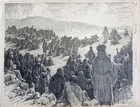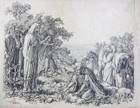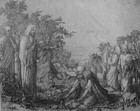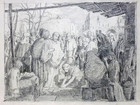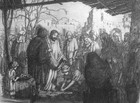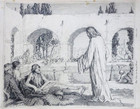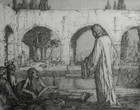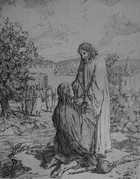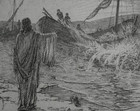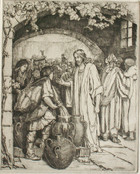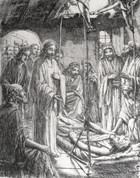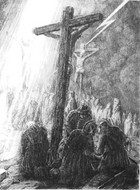Earl Stetson Crawford
(1877-1965)
Earl Stetson Crawford was born into a prominent Philadelphia family, the grandson of hat-maker, John B. Stetson. At the turn of the 19th century, he joined a stream of aspiring American artists heading to Paris and enrolled in the newly-opened Academie Carmen of Early Modernist James McNeill Whistler. The eccentric Whistler thought enough of Crawford’s abilities to appoint him “monitor” of his art class, but when Crawford returned to the U.S., he was not to follow his teacher in challenging the canons of conventional art.
Crawford made a career for himself as a popular Gilded Age portrait painter, muralist, and illustrator, providing the floral festoons for ingenue studies by Howard Chandler Christy in publications like The Christy Girl (1906) and Lovely Lady (1910). As one contemporary reviewer observed, Crawford’s “dominant art note is the decorative.”
The year 1923 marking a turning point in Crawford’s life. He moved with his wife, Brenetta, an accomplished painter of miniatures, to the south of France, where the couple lived until the outbreak of World War II forced them to return to the U.S. The Gilded Age critic had already noted a certain “mystic and symbolist” element in Crawford’s art. It is tempting to see his return to the continent of Van Eyck, Memling, and Holbein, whose paintings he had so admired in his student years, as a sign that this side of his artistic temperament was coming to the fore.
Crawford, the ex-patriot artist, devoted himself almost exclusively to etchings, which he considered the purest form of printmaking. He abandoned the high society studies of his New York period for the simpler fare of European peasant life and provincial folk festivals. Religious themes appeared more often in his work. The Crawford drawings and etchings in the Sacred Art Pilgrim collection date from the early 1950s, when the artist had settled in Pasadena, California.
These biblical scenes are largely unchanged in style from Crawford’s European landscape studies of the 1920s. The rich details of geography and architecture show the hand of a master draughtsman and etcher at work. Almost all the images come from a series on the miracles of Christ and depict Jesus the Healer, responding to the request of a nobleman to cure his ailing son; speaking with Blind Bartimaeus; healing the invalid at the Pool of Bethesda, the paralytic man let down through the roof, and the woman with the issue of blood. Three of the etchings are displayed with preliminary sketches.
There is a timelessness about these artworks. Modernism may have been the driving force in American art just then, but Crawford, the one time decorator of Christy Girl books, had come to view reality with the eyes of Rembrandt.
